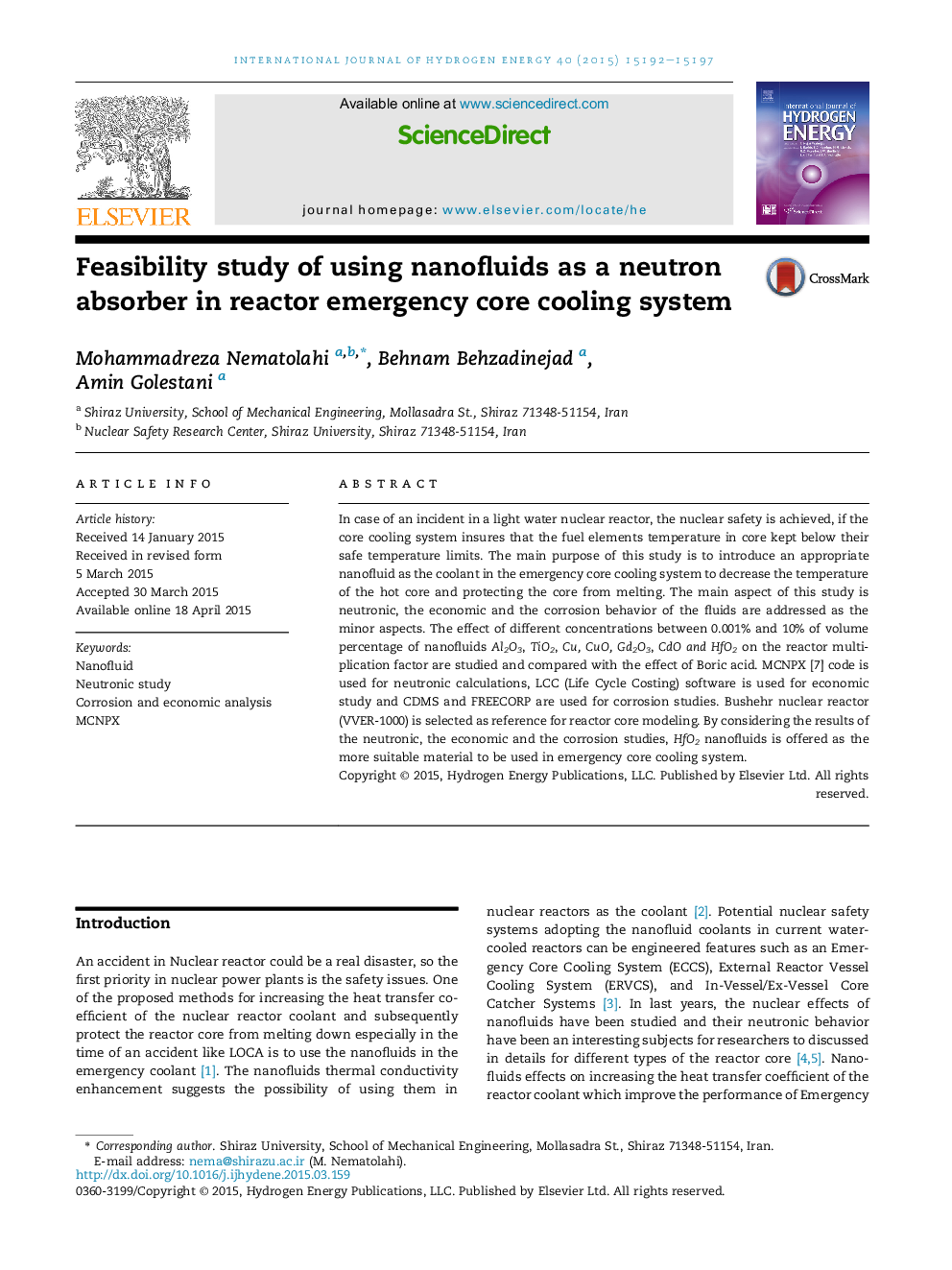| Article ID | Journal | Published Year | Pages | File Type |
|---|---|---|---|---|
| 1273995 | International Journal of Hydrogen Energy | 2015 | 6 Pages |
•Introduce an appropriate nanofluid as the coolant in the emergency core cooling system.•Considered nanofluids are Al2O3, TiO2, Cu, CuO, Gd2O3, CdO and HfO2.•Some aspects of neutronic, economic and corrosion behaviors of them are addressed.•The more suitable nanofluids are the HfO2 to be used in emergency core cooling system.
In case of an incident in a light water nuclear reactor, the nuclear safety is achieved, if the core cooling system insures that the fuel elements temperature in core kept below their safe temperature limits. The main purpose of this study is to introduce an appropriate nanofluid as the coolant in the emergency core cooling system to decrease the temperature of the hot core and protecting the core from melting. The main aspect of this study is neutronic, the economic and the corrosion behavior of the fluids are addressed as the minor aspects. The effect of different concentrations between 0.001% and 10% of volume percentage of nanofluids Al2O3, TiO2, Cu, CuO, Gd2O3, CdO and HfO2 on the reactor multiplication factor are studied and compared with the effect of Boric acid. MCNPX [7] code is used for neutronic calculations, LCC (Life Cycle Costing) software is used for economic study and CDMS and FREECORP are used for corrosion studies. Bushehr nuclear reactor (VVER-1000) is selected as reference for reactor core modeling. By considering the results of the neutronic, the economic and the corrosion studies, HfO2 nanofluids is offered as the more suitable material to be used in emergency core cooling system.
